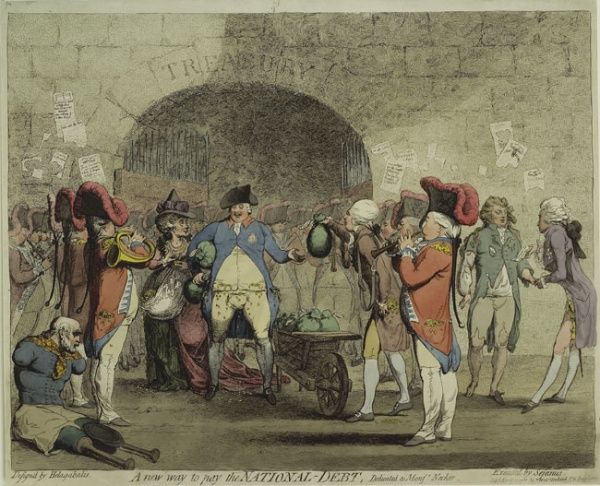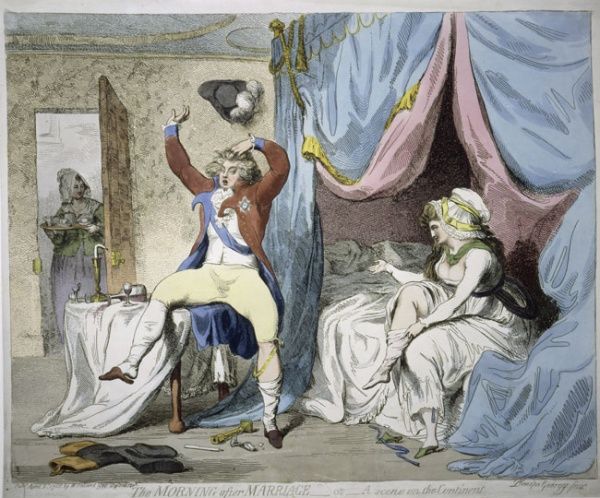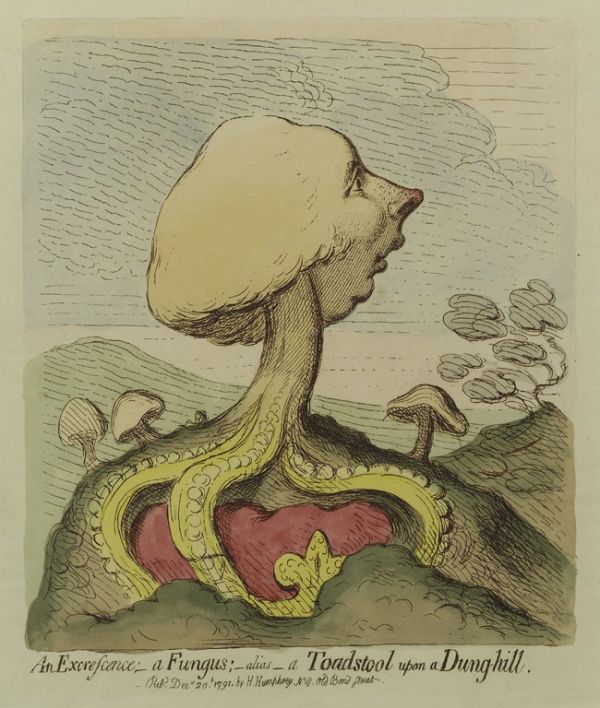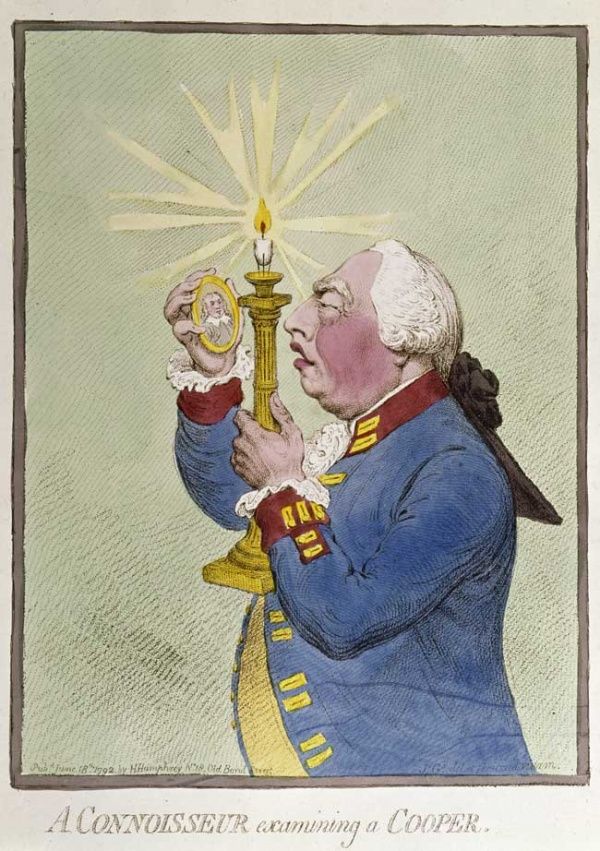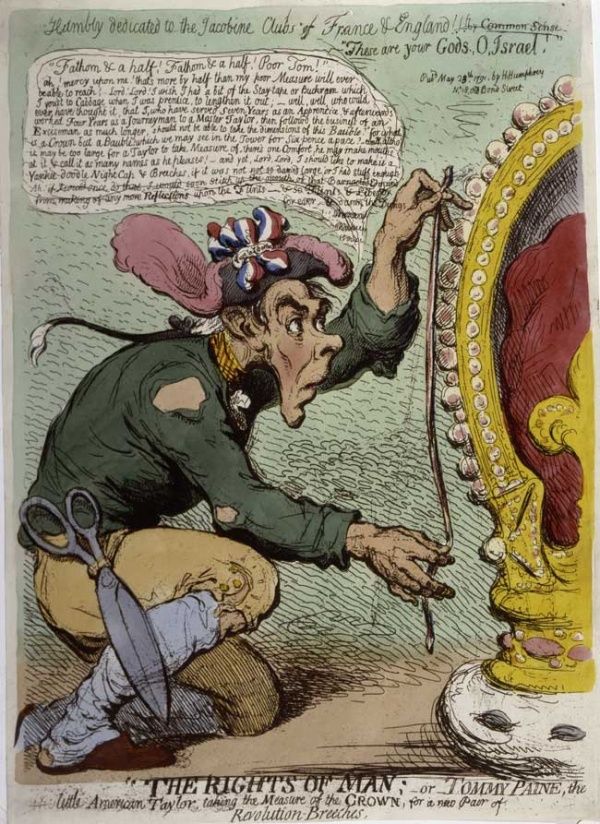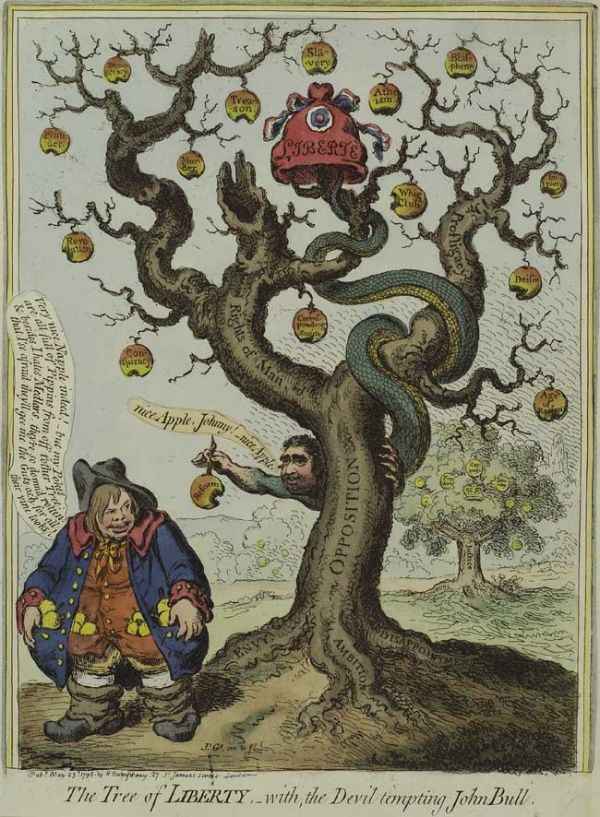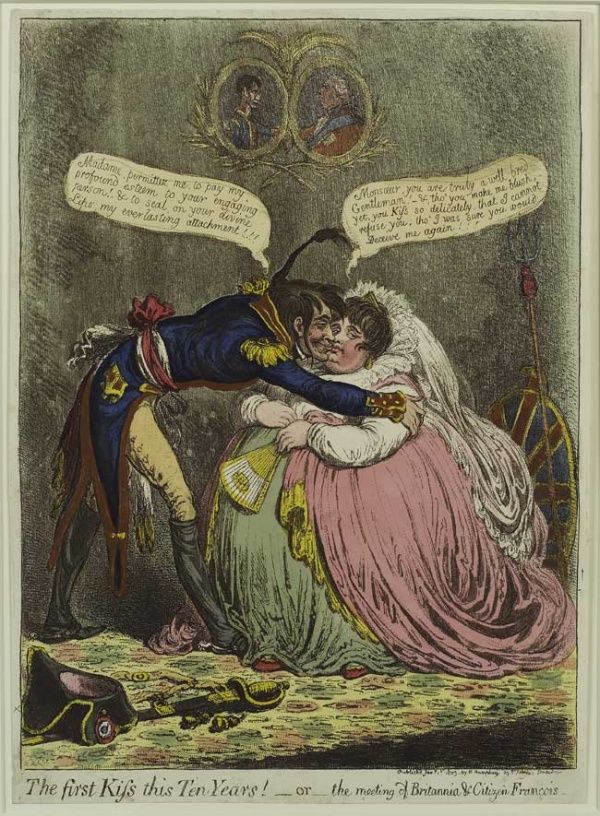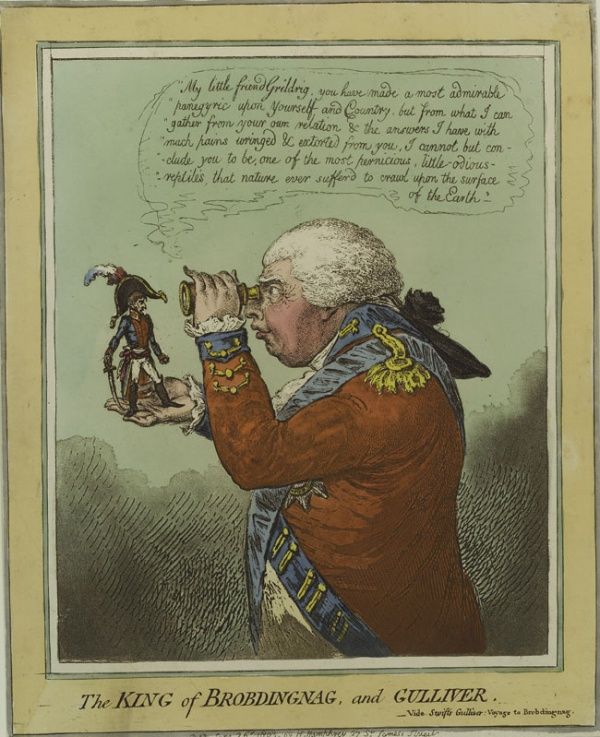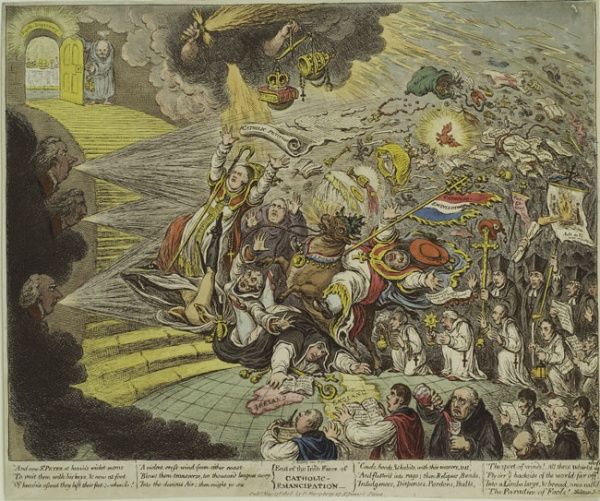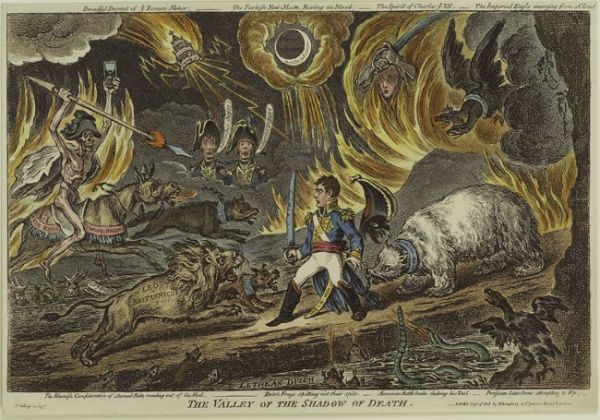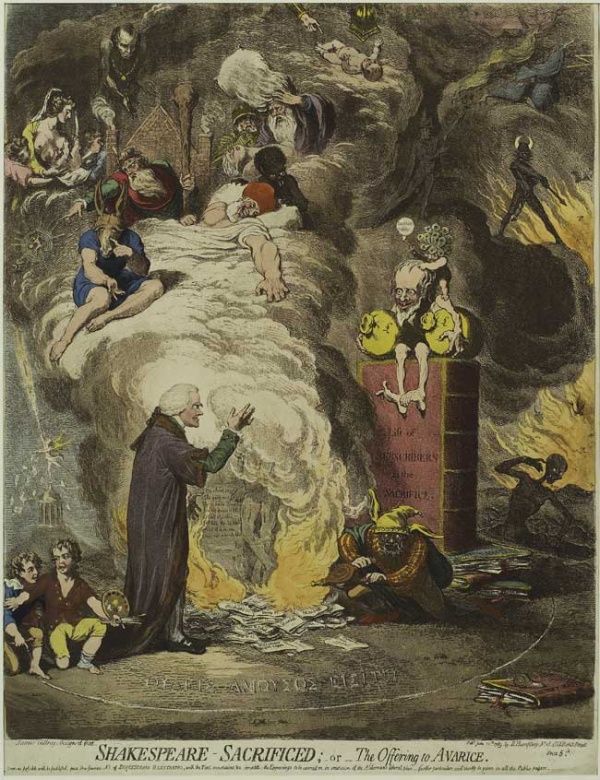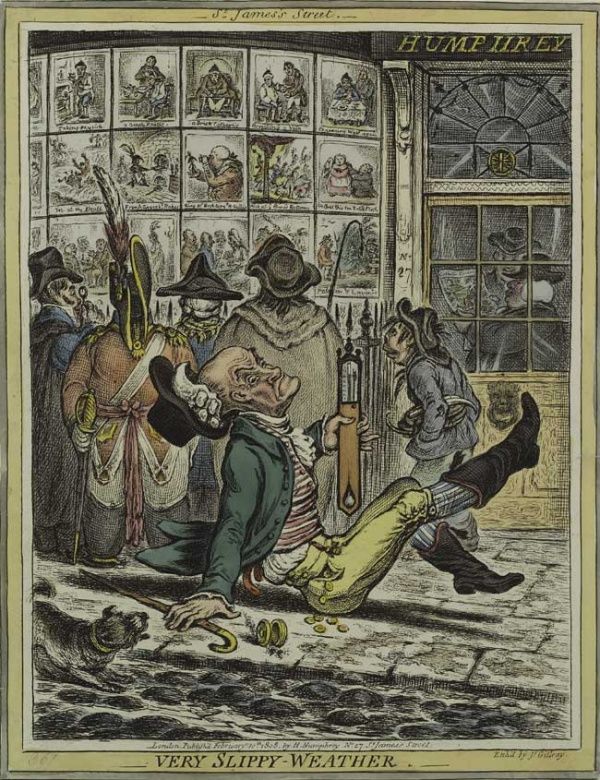Each day this month I will be profiling a notable political cartoonist. Since the choices are vast, I've decided to slim the numbers down a bit and eliminate living cartoonists. Perhaps I will do a current political cartoon stars in the future.
Here's an archive of the artists mentioned already.
Today we look at perhaps the greatest caricaturist of all-time!
Enjoy!
James Gillray was born in 1756 in Chelsea.
He was apprenticed to an engraver (of normal stuff like maps, banknotes, etc.), and in 1778, he enrolled in the newly founded Royal Academy of Art. It was here that he developed his unique caricature style.
He began doing satires at around that same time, and soon began the foremost relationship of his life, with Mrs. Humphrey, who would publish his prints. He would live over her print shop until he died. In many ways, the relationship of Gillray and Humphrey reminds me of that of Sweeney Todd and Mrs. Lovett - they never married, but they were clearly involved - she facilitated his craft and he, I dunno, kept her company, I suppose.
In one of his first major pieces, Gillray mocks the spending of the Royals during a time that England had a large national debt.
Note the Prince of Wales getting a check to pay off his debts on the right. The King wouldn't pay his debts, hence his tattered clothes. The Prince would be a consistent target of Gillray's...
Including here, where the Prince was rumored to have secretly married a Catholic peasant...
Gillray uses Hogarth's prints of Marriage a la mode AND a Harlot's Progress to depict his views on this subject (Gillray was not a fan of Catholics).
Here is a brilliant satire of William Pitt, where Gillray shows the young Prime Minister how Gillray views him...it's almost Seussical...
George III got the brunt of Gillray's satires (along with Pitt, of course), and only made matters worse when he remarked about Gillray's work "I don't understand these caricatures."
That led to this following piece, A Connoisseur Examining a Cooper...
Other politicians noted how popular Gillray was. Being caricatured by Gillray was seen as quite an honor in some circles, sorta like being insulted by Don Rickles. One fellow even sent Gillray a portrait he had done, in case Gillray needed some help caricaturing him!
Here, Gillray mocks Thomas Paine, who had just recently released his international smash, The Rights of Man...
Here is John Bull, the personification of Great Britain. John Bull had been around since the early 18th Century, but it was the printmakers of the late 18th Century, Gillray included, who really popularized the character.
Here is Gillray's take on the (rather temporary) treaty between England and Napoleonic France.
Napoleon apparently loved this drawing.
He likely did not like this one as much, with Napoleon drawn as Gullivar (as a shot at his size).
This drawing is notable for the way that Gillray did not come up with it on his own. By the early 19th Century, Gillray was so famous as a caricaturist that he began having people send him sketches and ideas, some just rough sketches, but some fully drawn pieces, which he would then redraw himself - this being probably the most famous.
Here's another anti-Catholic piece - Gillray's response to the notion of Catholic Emancipation...
Gillray could be quite patriotic at times, too (in fact, he once gave Pitt an extremely flattering personage in one piece during the Napoleonic Wars), and here he is at his most serious...
Like most other cartoonists of the time (Hogarth seemed to be the exception, as he pursued painting to make a name for himself so he could do prints), Gillray first wanted to be a "real" painter, turning to prints when that turned out to be the way he could make a name for himself. So when a fellow decided to do a big collection of British artists (feeling they weren't getting enough respect) drawing scenes from Shakespeare plays, Gillray was notable irked that he was not invited.
So he was QUITE delighted when, due to the war with France, the exportation of fine art was cut off, so this endeavor was a complete disaster, and Gillray gladly rubs it in...
The artists involved in the fiasco apparently all tried to get copies of this print for themselves...
Finally, here is a piece by Gillray where he caricatures the Prince of Wales and all his Royal friends.
What's particularly notable about this print is that the Prince of Wales was so angered by this piece that he paid Gillray an obscene amount of money to buy the print and have the plate destroyed!! Gillray agreed, however, the people the Prince trusted to do the destroying could not bring themselves to do it, so they secreted the plates away and it was later produced in a series celebrating the "censored" nature of the piece.
Gillray sorta went insane in 1810, and spent the last five years of his life totally nuts (he tried to kill himself in 1811). He died in 1815, still living over the print shop of Mrs. Humphrey.
By the by, just as one last bit - they would always hang Gillray's prints in the window for sale, so people, of course, would always gather around the shop - Gillray did a drawing of this scene, and it's an amusing capture in time of the depictions of his own work! I guess we can tell which drawings he thinks are the most important!
Thanks to the New York Public Library and their James Gillray exhibit from a few years back, for the images. Check the exhibit out here for more images and more information about Gillray!

